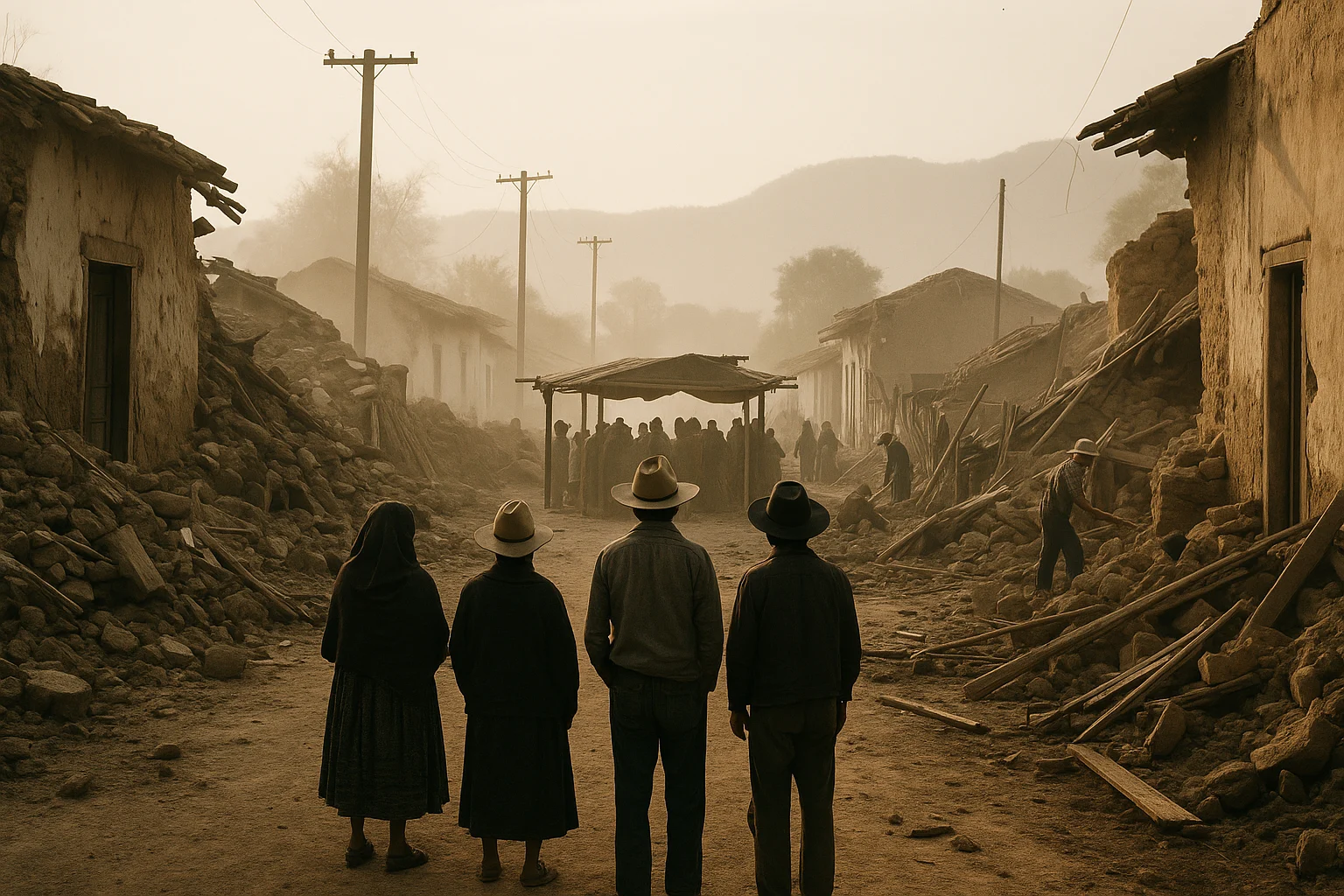
1976 Guatemala Earthquake
by: The Calamity Calendar Team
February 4, 1976
The Calm Before the Storm
It was deep into the night on February 4, 1976, as Guatemalans went about their nightly routines. All too often, the air was filled with the sounds of nocturnal creatures, the hum of engines, and the quiet murmurs of human voices preparing for sleep. The people nestled within the structures of adobe and masonry, creations born from tradition and necessity, unaware that history was about to split into a before and an after.
Guatemala sat precariously on the tectonic crossroads of the Caribbean and Cocos Plates. Over centuries, this seismic tension had been both a whisper and a roar, a violent reminder of nature’s unpredictable power. While smaller tremors had occasionally rattled the populace, the looming threat of something more cataclysmic was a shadow over everyday life. Despite this, with a population of roughly 6.9 million at the time, the nation's disaster preparedness was thin, and many of its buildings precariously constructed.
The Strike of 3:01 AM
At precisely 3:01 in the morning, the earth groaned, rippled, and broke open as if tearing a page from an ancient tome. A magnitude of 7.5 on the Richter scale, the earthquake was centered roughly 160 kilometers northeast of the capital, Guatemala City, yet its reach was felt across an expanse of 30,000 square kilometers.
In an instant, adobe homes crumbled, and communities that had thrived for generations were reduced to stone and dust. Roads and communication lines were severed, creating not just a landscape of physical devastation but a chasm of isolation. Desperate cries for help were muffled by the deafening silence of toppled structures, leaving survivors trapped beneath them. Those who emerged into the dusty dawn were greeted not by the familiar sights of their towns, but by a landscape unrecognizable and alien.
Survival Amidst Ruin
As the first light crept across the shattered plains, the scale of destruction unfolded. Entire villages had been obliterated. In those early hours, rescue efforts were a test of human will against insurmountable odds. Many roads were buried under landslides, delaying crucial aid and trapping those in dire need.
The human toll was immense. Over the course of a few brutal hours, life in Guatemala had forever changed. Approximately 23,000 souls were lost to the quake, while 76,000 more bore the physical scars of injury. Over a million people were left without homes. The air was thick with the collective grief of a nation, and the economy, already fraught with difficulty, faced a setback that would echo for years. Agriculture, the backbone of Guatemala’s economy, was disrupted, and the infrastructure bore damage estimates exceeding $1.1 billion USD—equating to nearly $5 billion today.
Thanks for subscribing!
The Rally of the World
Throughout the chaos, Guatemala's plight did not go unnoticed. An outpouring of international aid followed, as humanitarian organizations rushed to deliver food, medical supplies, and construction materials to the broken land. Locally, courage emerged from grief, spurring efforts to rebuild—not only homes but lives and dreams.
Communities gathered together, salvaging what they could from ruins. In the months that followed, stories of resilience spread. People came together in makeshift shelters, finding strength in unity. Slowly, the landscape shifted from one of despair to determination.
Catalysts for Change
The lessons of February 4 sparked conversations far beyond the borders of Guatemala. The earthquake nudged national and international bodies towards introspection: How can we prevent a tragedy of this severity from ever happening again? Building codes were revised, enforcing requirements for structures that could withstand seismic challenges. The scars of 1976 emphasized the dire need for comprehensive disaster preparedness, not only for Guatemala but as a standard for regions worldwide vulnerable to similar fates.
The Legacy of 1976
Today, the 1976 Guatemala Earthquake serves as a poignant reminder of the fragility and resilience of human life. Advances in tectonic studies and seismology have deepened our understanding, underscoring the enduring need for vigilance and preparedness. The event is a case study for modern emergency management practices, influencing how nations think about disaster readiness.
The tales of that day and the resilience shown in the face of overwhelming odds serve not only as a memory but as a beacon of hope and a guide for the future. Lives were lost but not forgotten, resilient as Guatemalans continue to build on the foundations set by those dark, and yet illuminating, days in February 1976.
Stay in the Loop!
Become a Calamity Insider and get exclusive Calamity Calendar updates delivered straight to your inbox.
Thanks! You're now subscribed.